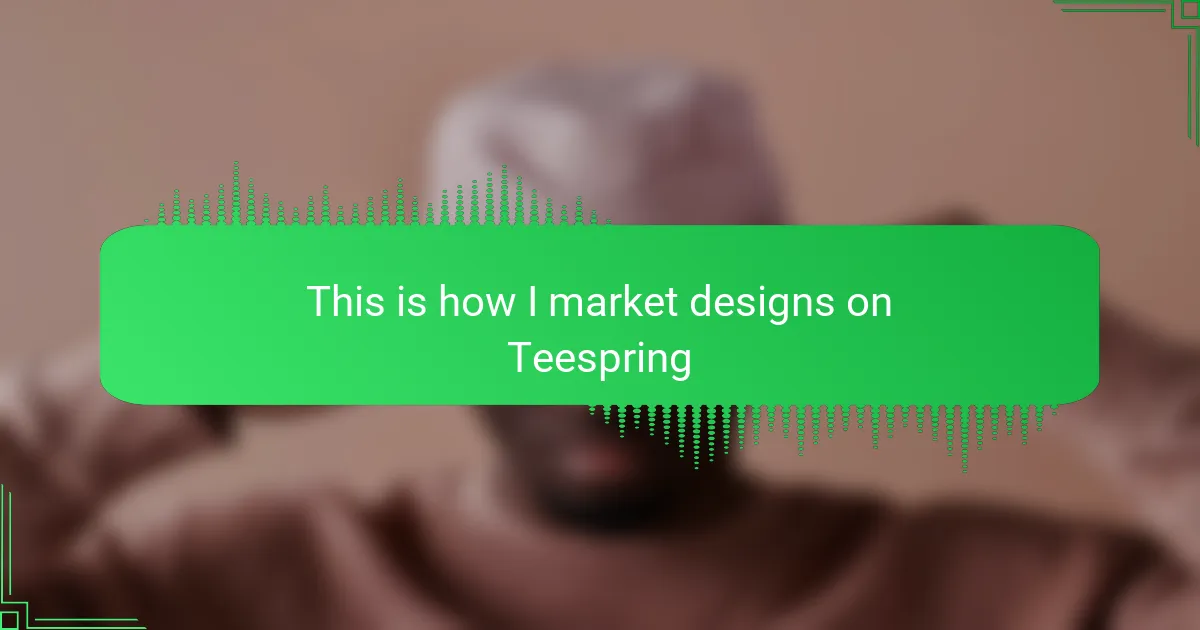Key takeaways
- Teespring offers a user-friendly platform for selling custom designs without upfront costs, simplifying production and shipping.
- Understanding your target audience and creating relatable designs is crucial for increasing engagement and sales.
- A professional store setup, including a memorable name and clear descriptions, is essential for building customer trust and brand identity.
- Effective marketing strategies should blend creativity with consistency, utilizing social media and emotional storytelling to reach potential buyers.
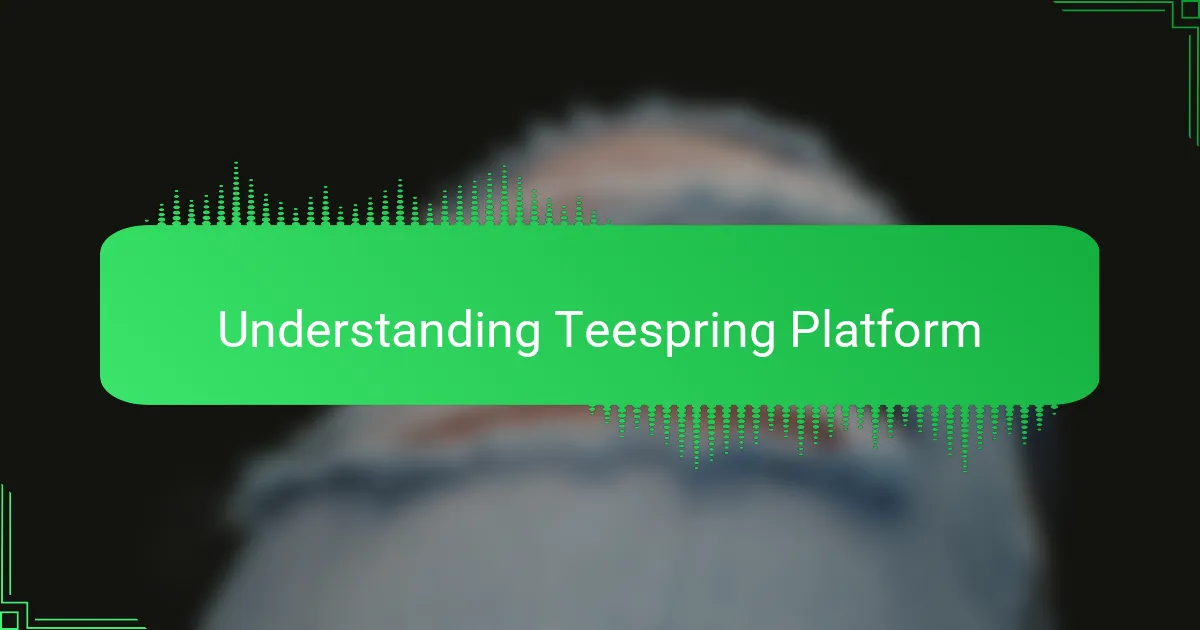
Understanding Teespring Platform
Teespring is a print-on-demand platform that simplifies selling custom designs without upfront costs or inventory. When I first started, I appreciated how user-friendly the dashboard was—it made uploading my designs and setting prices straightforward, even for someone new to e-commerce.
What really stood out to me about Teespring is its integrated marketing tools, such as social media promotion and boosted listings. Have you ever felt overwhelmed trying to drive sales? I found these features helpful because they gave me a way to reach buyers without constantly juggling multiple platforms.
Another thing I discovered is how Teespring handles production and shipping, which lifted a huge weight off my shoulders. Knowing that once the design is live, I can focus more on marketing rather than logistics made the whole process feel less daunting and more enjoyable.
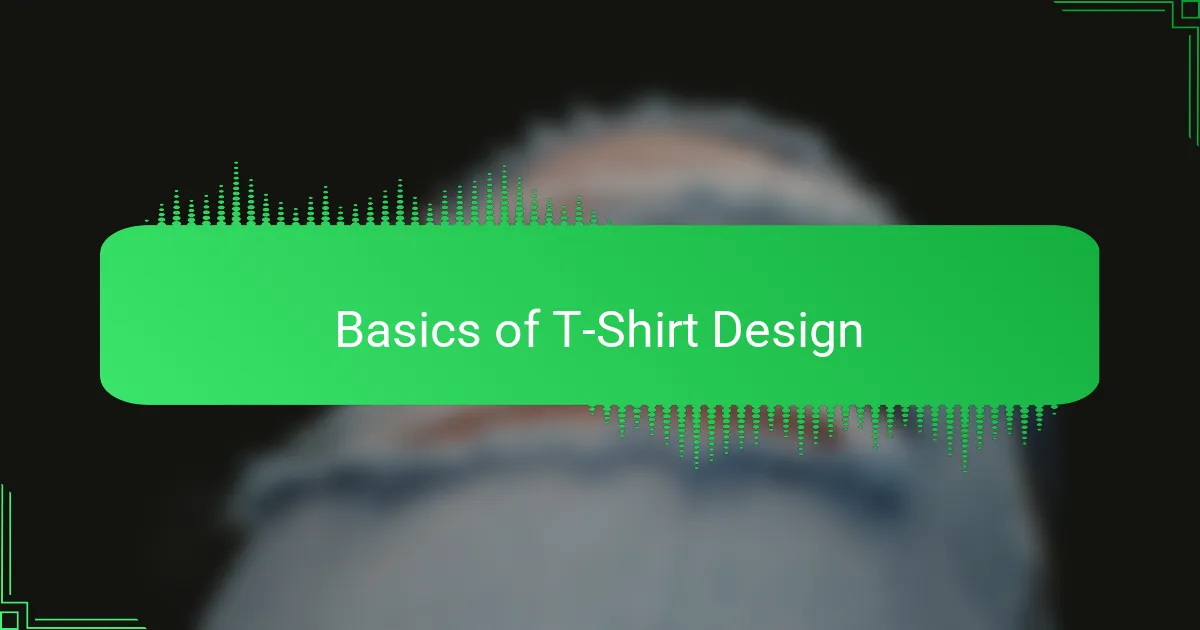
Basics of T-Shirt Design
The basics of t-shirt design start with understanding your audience and creating visuals that resonate with them. I’ve learned that simplicity often wins—clean, bold graphics catch the eye better than overly complicated art. Choosing the right color combinations is equally crucial; sometimes, a limited palette makes the design pop more effectively than a rainbow of hues.
| Design Element | Key Considerations |
|---|---|
| Audience | Know their interests and style preferences to create relevant designs |
| Visual Simplicity | Bold, clear graphics tend to draw more attention and sell better |
| Color Palette | Limit colors for impact; contrast helps designs stand out on various shirt colors |
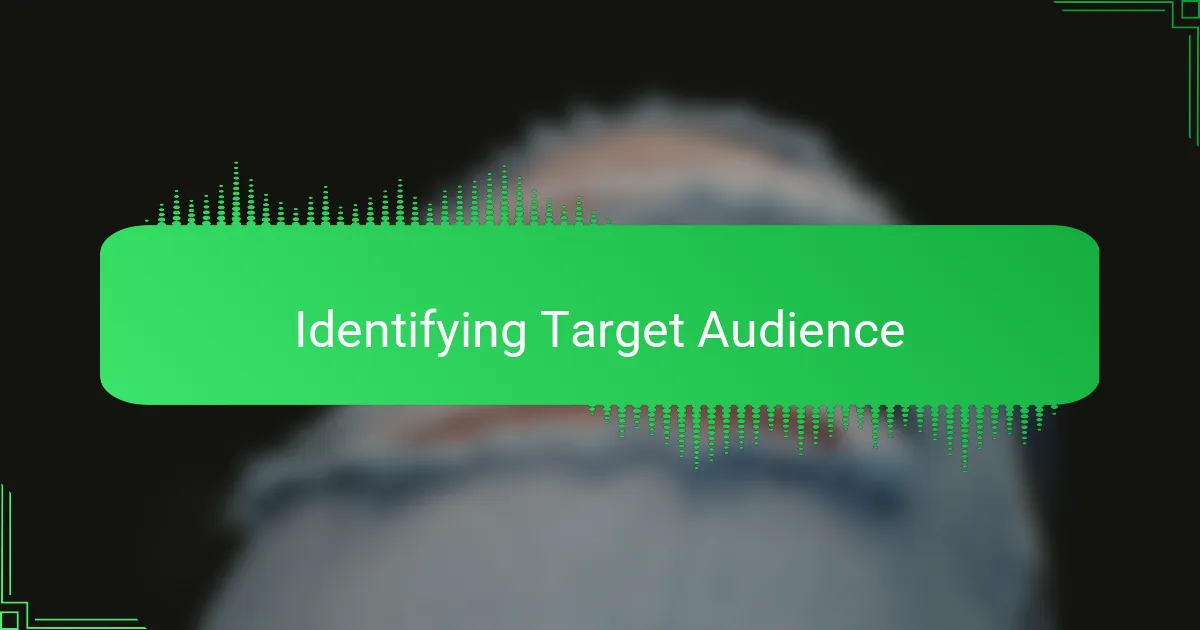
Identifying Target Audience
Getting clear on who exactly I’m designing for changed everything in my Teespring journey. At first, I tried appealing to everyone, but that approach felt like shouting into a void—my designs weren’t connecting and sales lagged. When I narrowed down to a specific group, like fitness lovers or pet enthusiasts, it was like suddenly knowing exactly what stories and styles would resonate.
I remember asking myself tough questions: What does my target audience care about? What problems do they have that my design could solve or celebrate? Answering these helped me create designs that felt authentic, not just trendy. It became easier to craft marketing messages because I knew the language and themes that clicked with my audience’s lifestyles.
Sometimes, identifying your audience means going beyond demographics and tapping into emotions or values. For example, designing a shirt for teachers who want to show pride in their work isn’t just about age or location—it’s about capturing their passion and daily challenges. That’s when I noticed real engagement and repeat buyers start to appear. Have you thought about what really motivates your potential customers?
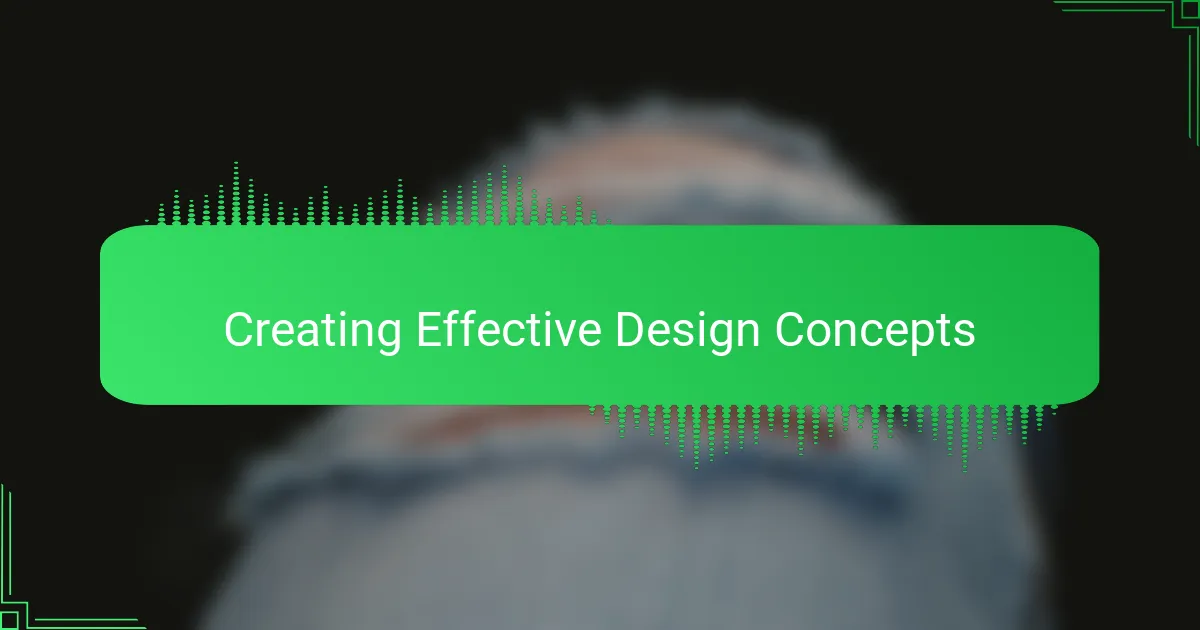
Creating Effective Design Concepts
Designing for Teespring always starts with understanding the audience’s vibe. When I first tried to create a design just based on what I thought looked cool, it rarely sold. But once I shifted to concepts that spoke directly to niche communities—whether it was gamers, pet lovers, or local pride—sales started climbing. It’s about creating designs that feel personal and relatable, not just visually appealing.
I focus on clarity and message simplicity. Complex designs can confuse or overwhelm potential buyers scrolling fast through hundreds of options. From experience, a powerful, straightforward concept grabs attention instantly and ignites an emotional connection. Here’s what works for me:
- Identify a specific target group or interest before designing
- Use bold, readable fonts that complement the message
- Incorporate humor or relatable phrases that resonate emotionally
- Keep colors balanced for visibility without being garish
- Test concepts by sharing on social media to gauge reactions before launching
- Focus on themes that evoke nostalgia, pride, or motivation
These steps help me create designs that don’t just look good but truly connect with buyers on a personal level.
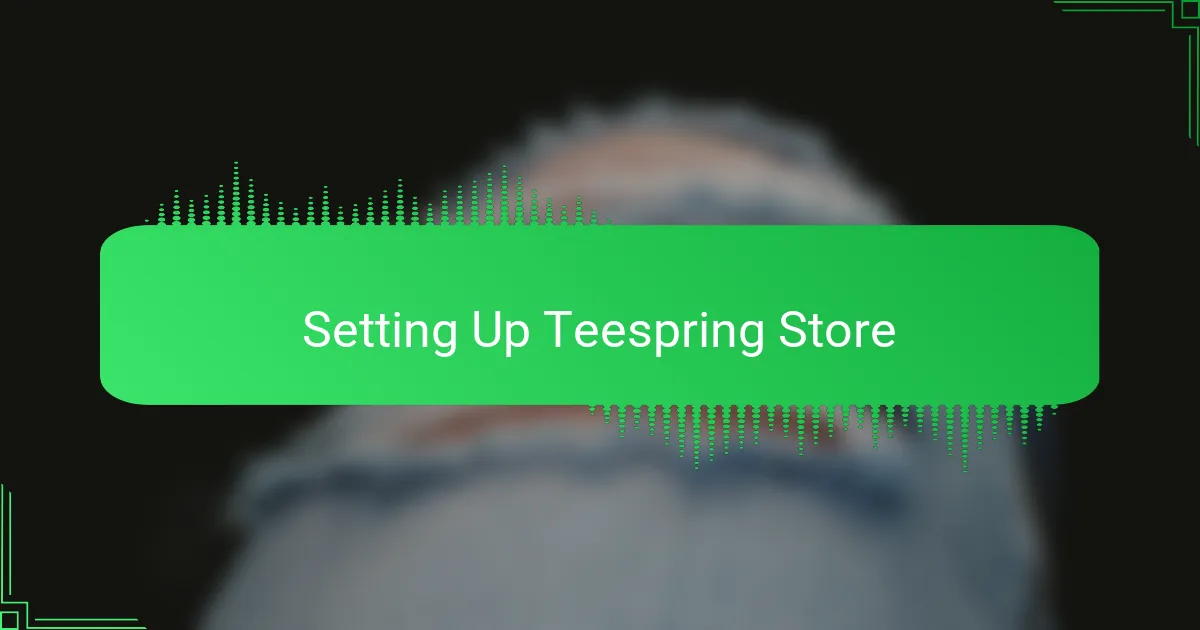
Setting Up Teespring Store
Setting up a Teespring store is the foundation of successfully marketing your t-shirt designs. When I first started, I underestimated how crucial a clean, professional-looking store layout was. Spending time customizing the store’s look not only made my designs stand out but also gave me confidence that customers would take my brand seriously.
Here are key steps I follow when setting up my Teespring store:
- Choose a memorable store name that reflects your design style and target audience
- Upload a high-quality logo to establish brand identity
- Organize collections logically to make browsing easy for visitors
- Write clear, engaging store and product descriptions that tell the story behind the designs
- Set proper pricing to balance profit margins with customer value perception
- Connect social media accounts to drive traffic and build community around your store
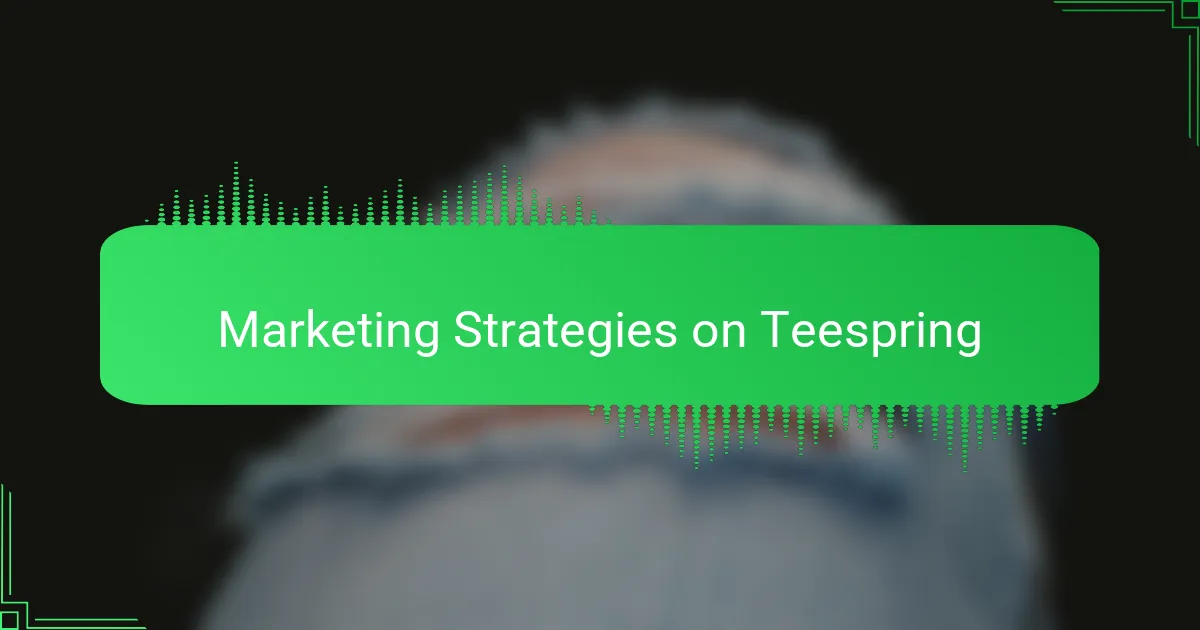
Marketing Strategies on Teespring
Marketing on Teespring is all about understanding your audience and creating compelling campaigns that speak directly to them. From my experience, the most effective strategies blend creativity with consistent effort—a simple post won’t cut it, but a carefully planned approach can truly make your designs stand out.
Here are some key tactics I’ve found invaluable when promoting my Teespring designs:
- Leverage social media platforms tailored to your niche for targeted outreach.
- Use engaging visuals and storytelling to connect emotionally with potential buyers.
- Run limited-time promotions or discounts to create urgency.
- Collaborate with influencers who align with your brand’s style.
- Optimize product descriptions with relevant keywords to improve searchability.
